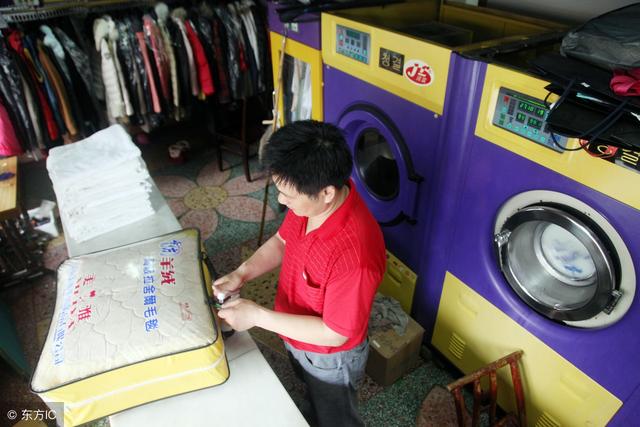
Tetrachloroethylene is a non-flammable liquid in the usual environment, but it is very easy to evaporate in the air. The smell is stimulating and sweet. Tetrachloroethylene has irritation and anesthetic effects and can be absorbed through the digestive tract, respiratory tract, and skin. Prolonged exposure to environments that exceed the permissible concentration of tetrachloroethylene can cause eye irritation, reaction and physical discomfort. If you inhale large amounts of high concentrations of tetrachloroethylene gas, you will lose consciousness, difficulty breathing, and even coma.
Tetrachloroethylene is a kind of dry-cleaning solvent that is commonly used in countries all over the world. It has the advantages of high degree of cleanliness, recyclability, safety, and low price. Now there is no dry cleaning solvent comparable to it. However, its biggest drawback is that it is harmful to the human body, and it is necessary to take effective protective measures on the equipment and at the same time with suitable personal protective equipment.
1, the harm to human body
In the normal dry-cleaning process, because some laundry shops, especially small and medium sized laundry, did not follow the operating procedures, the use of components such as tetrachloroethylene, carbon tetrachloride and benzene was used to compound dry-cleaning preparations. Although this kind of compounded dry-cleaning preparation is relatively good in terms of washing performance, it is extremely dangerous to the human body and machinery and can easily cause accidents such as poisoning, fire, or corrosion of machinery. In addition, the gas emitted from the slightly damp dry-cleaning clothes is also harmful to the human body.
2, equipment protection measures
1. Reasonably arrange the process flow of the dry-cleaning industry. The laundry table and laundry station should be set separately.
2, dry cleaning machines, dryers and other equipment as far as possible isolated and placed, and set up local ventilation or full ventilation device.
3. The container containing the dry-cleaning agent shall be marked with the label, indicating the name of the dry-cleaning agent, the danger, the chemical composition and the warning sign of the harmful substance.
3, personal protective equipment
1. Respiratory protection: When the concentration in the air exceeds the standard, a gas mask should be worn. Wear an air-ventilator when emergency rescues or evacuates.
2. Eye protection: Wear anti-chemical safety goggles, goggles need to go through the national test and reach its standard before use. After use, it needs to be cleaned and maintained in time, and it needs to be replaced when necessary.
3, body protection: wear anti-static overalls, washing after use should be as simple as possible, should avoid the work clothes by a strong mechanical and chemical operation of the washing.
4, hand protection: If necessary, wear anti-chemical gloves, try to use imported PU material, pure wool lining, can be repeatedly used to clean, easy to wear off, soft texture, wear resistant gloves.
Summary: Do not panic if the company is exposed to PCE leakage. Emergency rescue workers wear air respirator and wear chemical protective clothing. Do not touch the leak directly, and make sure that it is leak-proof under a safe condition.
We can customize the stained color Actmix®Pre-dispersed Rubber Additives and chemicals. Compare with the natural color rubber chemicals, which can be easily identification, avoid mistake feeding.
The stained color Pre-dispersed rubber additives and chemicals are with same performance as the natural color of Actmix®Pre-dispersed rubber chemicals, 100% material test, filtration during process.
Stained Color Rubber Chemical Granules
Stained Color Rubber Chemical Granules,Natural Synthetic Rubber Chemical Granules,Stained Pre-dispersed Rubber Chemical Granules,Polymer-bound Pre-dispersed Rubber Chemicals
Ningbo Actmix Rubber Chemicals Co., Ltd. , http://www.actmixchemicals.com